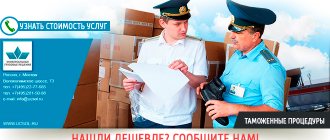Today we will talk about labeling that simplifies international trade. Under the spotlight is the EAC mark of conformity on goods: decoding, application rules, dimensions of the EAC label - we will consider all this in detail. For what? So that you know exactly what it looks like, you can spot a fake in time and protect yourself from buying it.
It should be noted that in recent years, cases of import of counterfeit goods into the Russian markets have become more frequent, and therefore the number of open administrative proceedings has increased. This state of affairs is a prerequisite for tightening import-export controls and another compelling reason to be vigilant.
EAC value
EAC is a single mark for the circulation of goods on the territories of states that are part of the Customs Union: Armenia, Belarus, Kazakhstan, Kyrgyzstan, Russia. Otherwise it is called Eurasian Conformity mark, or Eurasian conformity. The emblem is evidence of the quality and safety of products and means the possibility of free import and sale of goods. Such cargo has either a certificate or a declaration, or it has passed state registration. How to confirm the conformity of a product imported or manufactured in the EAEU countries is specified in the technical regulations of the Customs Union.
The EAC manipulation mark is applied following the results of declaration or certification according to one of the acceptable schemes.
Did you know that before the adoption of the EAC marking, products were designated with a mandatory certification mark in accordance with GOST R 50460-92.
How is it deciphered?
The abbreviation hides the concept of EurAsian Conformity or, in Russian, Eurasian Conformity. By default it is written in Latin, although Cyrillic is also acceptable.
Please note that from July 2021 its presence is mandatory: if before this date the absence was acceptable, then after it the requirements have become stricter, and now an item without this identifier is simply withdrawn from sale.
The place for its placement can be either the item of trade itself, or the container in which it is delivered, and even the accompanying documentation. Although the last option is far from the most visual, so it is better to apply it to things so that it is immediately visible to a potential buyer.
Regulatory acts
Labeling with the EAC mark on packaging is regulated by decision of the Customs Union Commission dated July 15, 2011 No. 711. The document determines the procedure for using a single circulation mark on the market of the Eurasian Economic Union. Before the adoption of this legal act, the decision of 04/07/2011 No. 605 was in force.
Decision No. 711 approved what the marking should look like and how it should be applied.
Important! Products may be released for circulation only if they comply with the provisions of technical regulations currently in use and provided that quality assessment has been carried out according to acceptable schemes.
Which products must bear the EAC mark?
The EAC mark must be on all goods that are imported into the EAEU countries, produced in the territories of states that are members of the union, and intended for sale to individuals and organizations. The exception is mainly products produced and imported for personal use.
So, the following products are subject to labeling:
- Products for children (TR CU 007/2011, TR CU 008/2011):
- Nipples made of latex, rubber, silicone;
- Haberdashery, sanitary and hygienic products, including disposable products (toilet pots, baths, nappies, diapers, cotton swabs);
- Cutlery, dishes;
- Toothbrushes, gum massagers;
- Outerwear, dresses, robes, underwear, swimsuits, hats, bedding:
- Leather goods;
- Strollers, bicycles;
- Books, stationery;
- Toys.
- Non-food products (TR CU 004/2011, TR CU 005/2011, TR CU 006/2011, TR CU 009/2011, TR CU 017/2011, TR CU 025/2012, etc.)
- Low-voltage equipment (household electrical appliances, computers and peripheral devices, hand-held, portable, electric musical instruments, cables, wires, cords, switches, relays, switches);
- Packaging products (bags, packages, containers, boxes, barrels, flasks, cans, jars);
- Pyrotechnics (signals, fireworks, charges, rockets, pyrobolts, cartridges)
- Perfumes and cosmetics (cosmetic oils, perfumes, eau de toilette, colognes, lipstick, eye shadow, manicure sets, shampoos, hair sprays, teeth fresheners and whiteners, soap);
- Light industry products (bed linen, towels, clothing, shoes, curtains, carpets, bags, gloves, belts);
- Furniture for household and public spaces, schools, kindergartens, catering establishments, hotels, hospitals, etc.
- Food products (TR CU 015/2011, TR CU 021/2011, TR CU 023/2011, TR CU 027/2012, TR CU 029/2012 and much more):
- Grain products (cereals, legumes, oilseeds);
- Food products (meat, eggs, milk, fish, vegetables, fruits, spices, drinks, fats, dietary supplements, flour, cereals and bakery products, sugar, baby food, etc.);
- Fruit and vegetable juices;
- Dietary therapeutic and preventive nutrition;
- Food additives, flavorings, etc.
A specific list of products is indicated in the Customs Regulations of the Customs Union.
It is important! There are 7 product declaration (certification) schemes in total. The choice depends on the category of product, its purpose, and the status of the applicant.
Requirements for a product with EAC
A product marked with the EAC mark must meet safety and quality requirements. But since each product has its own characteristics and purpose, the technical regulations specify the main parameters.
Thus, low-voltage equipment must have a sufficient level of protection against electrical damage, elevated temperatures, arc discharge, radiation, and injury to users from rotating and stationary elements. Other requirements include:
- Insulation protection;
- Mechanical wear resistance;
- Emergency shutdown in case of overload, failure;
- Safe installation and connection.
Non-food products must be accompanied by instructions or instructions on their use and operation.
Food products are subject to requirements for the levels of toxic, potentially hazardous substances, antibiotics, pesticides, radionuclides, microorganisms, organoleptic, physicochemical, and microbiological indicators.
Depending on the category of goods, the conditions of production, transportation, and storage are prescribed.
Important! One of the stages of the certification procedure is the identification of goods on the basis of shipping documentation, supply agreement, specifications, labels, and other documents characterizing the product.
Where can I look for EAC on a product?
Marking is applied to each product, its packaging and/or accompanying documents (operating instructions, instructions for use, product passport, etc.). If the location of the EAC mark is on the label, then it is attached, glued, hemmed onto the product, onto its packaging. It is also possible to design an insert for products and a label for clothing.
Where to apply a single circulation mark is indicated in the technical regulations of the relevant products.
This is interesting! The Customs Union has developed and approved a special technical regulation TR CU 022/2011, which determines the labeling of food products. There is no such document for non-food products.
Requirements for applying EAC?
A single circulation sign is applied in the form of an image of three letters: EAC. Characters must have right angles, equal height and width. Accordingly, the font is selected taking into account this reservation. The letters placed next to each other must form an exact square. The background of the symbols is light or contrasting.
The dimensions of the EAC sign are not regulated. There is only an indication of the minimum height of letters - at least 5 mm. The final size of the label is determined by the product manufacturer or importer.
Features of applying the sign:
- Clarity and clarity of letters;
- Legibility of markings with the naked eye;
- If the background is white, then the letters are black, and vice versa.
The owner of the product determines how to apply the marking. This can be inkjet, laser or thermal transfer printing using special tapes. The main condition is that the image must be clear and clear, not erased during the life of the product.
Do you know how to mark a metal surface? The sign can be engraved, etched, casting, die-stamping, paint, or a special impact tool.
Features of the crime
What happens if someone produces, stores, transports or sells alcohol, tobacco products, food or other goods without labeling? If the cost is large/especially large, we will talk about a crime.
Concept and types
In the laws you can find several illegal actions that relate to goods without labeling (should be, but is not). Let's look at them:
- Production. The goods are being manufactured.
- Acquisition. This refers to the purchase, exchange, borrowing of unmarked goods.
- Storage. This refers to the possession of products without mandatory labeling, their maintenance indoors or outdoors.
- Transportation, that is, movement. The direction, type of transport and quantity of unmarked goods are not important.
- The previous four points indicate a crime if the actions are aimed at sales. This word means that unmarked goods were sold, gifted, bartered, and so on.
The crime concerns goods in general, food separately, as well as alcohol/tobacco products. Atrocities are committed either on a large scale or on an especially large scale. These concepts are explained in notes, and for different articles (more details in the section on norms).
Corpus delicti
It all depends on what exact action the attackers performed.
- Possession is a continuing crime. The movement of unmarked goods becomes criminal from the moment the movement begins.
- The acquisition is completed from the moment of possession (by any of the methods listed earlier). The same can be said about sales.
- Production without marking is considered completed simultaneously with the completion of production. In this case, it is necessary to prove that the labeling of goods was definitely not planned.
In all cases, sales/sales goal is the key concept. For example, if someone prepared meat without labeling on their own farm, kept it in the refrigerator for a couple of hours, and then transported it to the place where a family celebration was planned, then there is no question of a crime.
Other points:
- subject - general,
- intent is direct.
Qualifying features:
- actions of a group (with prior conspiracy or organized) or
- especially large value of goods.
Legal norms
Article 171.1 of the Criminal Code of the Russian Federation is devoted to the crime itself. To best understand large/extra large sizes, you will need to read the notes.
- Article 169 of the Criminal Code states that an amount of more than one and a half million rubles is considered large, and over six million is considered especially large. However, this note is valid only for the first and second parts of Article 171.1.
- For parts three to six inclusive, there are own notes. So, for food a large size - 250 thousand rubles, for tobacco and alcohol - 100 thousand. A particularly large size in both cases “starts” from one million rubles.
However, we may not be talking about a crime, but about an offense. The Code of Administrative Offenses of the Russian Federation contains Article 15.12. It is dedicated to the absence of labeling on any goods/products in general, on tobacco/alcohol products in particular.
Illegal actions under this article are production, sale and turnover. What is important is small volumes of production/sales – such that it is impossible to talk about large/especially large-scale violations.
We will tell you further about what awaits a criminal for goods without markings under Article 171.1 of the Criminal Code of the Russian Federation, with comments.
The following video contains information on possible innovations regarding product labeling and liability for its absence:
Who applies the EAC mark, where and when?
Applying the EAC marking is the responsibility of the importer, supplier and manufacturer of the product.
When importing goods, the conformity mark is applied before the product arrives at customs. If a product is manufactured in Russia, the manufacturer must mark it before selling it or transferring it to an intermediary for sale.
In some cases, marking is carried out within the customs area. This is allowed if the goods arrived for customs clearance without the EAC mark or if they were not applied according to the standards. Then the products are moved to a temporary storage warehouse, where they are labeled.
Only after this, customs inspectors have the right to authorize the release of goods into the territory of the EAEU.
This is interesting! Laser machines are especially popular for labeling non-food products. They allow you to apply a sign on various surfaces: metal, alloys, plastic, wood, glass, ceramics, paper, rubber, leather and even stone.
In what cases can the EAC mark be omitted?
Products manufactured before the entry into force of the relevant technical regulations of the Customs Union are not subject to marking with the EAC mark.
Also, an exception is made for products that are not certified according to the CU TR. For example, feminine pads must comply only with the Unified Sanitary-Epidemiological and Hygienic Requirements and GOST.
Exception goods include medicines, detergents and cleaning products, construction solutions and mixtures.
Important! If the products fall under the EAC marking exception, a refusal letter may be required by customs. Detailed consultations are available at CONSULT GROUP.
Types of EAC icons on labels and stickers
The ideal case is a mark on a tag: it immediately catches the eye, but at the same time you don’t have to, for example, tear it off the side of a cardboard box. But it is not always possible to place it in this way, especially if products are imported that were not manufactured in the country from the Customs Union.
It is precisely for such situations that other media are provided, which:
- can provide proper contrast between the main color and background, as well as image clarity;
- are easily attached to the container and do not get lost during transportation;
- they resist abrasion quite effectively and are, in principle, durable;
- are produced in various diameters, which means they help to implement the required dimensions of the EAC mark marking (10, 15, 20 mm);
- are manufactured in long rolls, designed for 1-10 thousand tags;
- They are inexpensive to produce.
Stickers have all these features, which is why we want to draw your attention to their most successful options.
Made from plain paper, white background, black letters, D10 mm
A true classic: compact, with a familiar design, cheap to manufacture, but at the same time capable of serving for a sufficient period of time.
From “golden” paper, D10 mm
Compared to the previous ones, they look more rich and representative, thanks to the spectacular shine, but at the same time remain well readable.
Made from “silver” paper, D10 mm
Another visually attractive, but clear look, the letters of which do not blend into the background, and the size of the EAC icon remains compact enough so that it looks organic even on small-sized products.
From white film
Also a classic with a self-adhesive base, most often used in cases where you need to quickly put marks on a large number of items. It is somewhat more expensive to manufacture than the already presented options, but it is more difficult to accidentally damage.
Made from transparent film
On such stickers, the letters are as visible as possible, but only when placed on a suitable surface. Since the abbreviation is made in a dark color, it means that the plane should be light.
Made of paper, white background, black letters, D15 mm
Here the diameter has already been expanded, which only contributes to clarity (although it results in an increase in material consumption), but otherwise it’s still the same classic.
Made of paper, white background, black letters, D20 mm
It differs from the previous type in size. Relevant for large-sized goods imported into the territory of the countries of the Customs Union: the EAC designation is not lost even on large boxes, successfully adjacent to other inscriptions - it immediately catches the eye, is perfectly readable, that is, it meets the basic conditions of the CU TR.
Made of paper, black background, white letters, D20 mm
An option made in contrast to the one just discussed, and suitable for light surfaces. It has been proven that such a sticker attracts attention, and it is very difficult to shade it with something - as long as it does not overlap with some color images.
All of them are usually produced in rolls in quantities of 1, 5 and 10 thousand pieces - for different needs and budgets. The costs of their purchase are negligible on the scale of any serious manufacturing enterprise, supplier and large seller.
We examined in detail what the EAC marking on products means and what goods it applies to; we also examined the requirements of the Technical Regulations for it - so that you understand how important it is to apply it correctly.
Now you can safely move on to creating such stickers yourself, and you will find programs for performing such work in the Cleverence catalog. Number of impressions: 14673
Without what can you not apply the EAC mark?
To confirm the quality and safety of products, the authorized certification body examines a set of accompanying documents, including mandatory laboratory test protocols. If necessary, a visit to production is carried out in order to become familiar with the main technological stages and verify compliance with the requirements of the quality management system at the enterprise.
Only after this is a decision made on issuing a document of compliance or refusal. If the decision is positive, the applicant receives one of three documents:
- Certificate of conformity TR CU;
- Declaration of conformity with TR CU (DS TR CU);
- Certificate of state registration.
Which document to receive depends on the product category and is specified in the specific technical regulations.
Product labeling is carried out on the basis of a certificate, certificate or declaration.
What to do if the product does not comply with technical regulations? There is only one option left - to improve the production process, improve the quality of the product, for example, replace ingredients in food products.
Labeling problems - how to avoid them?
Since goods must be marked before entering the Russian domestic market, the manufacturer or supplier of the product must ensure that the EAC mark is carried. But you should not completely rely on their integrity. It is better to take control of this process or seek help from customs clearance specialists. Having decided to deal with this issue yourself, adhere to the following algorithm of actions.
- Preliminarily agree with the certification body on a sample image of the sign and its location.
- Submit an approved sample to the manufacturer or supplier.
- In the agreement for the supply of products, provide for the obligations of the parties regarding labeling of goods.
If necessary, request documentary confirmation of the correctness of labeling from the manufacturer (supplier) - for example, a video or photo report.
Important!
If you received products without markings, then you have the right to correct the situation. To do this, you can use the “customs warehouse” procedure and label the goods yourself. It is difficult to achieve this, but it is quite possible.
What types of labeling violations are there?
The main violations during application are the following:
- Lack of labeling (sale of counterfeit goods);
- Marking not applied according to the rules: poorly printed icon, impossibility of identifying the symbol;
- Damage to the code on the packaging during transportation and storage;
- No re-labeling if the label on clothing is lost during fitting, for example;
- Labeling without documents confirming the quality and safety of the product.
Important! Lack of labeling or its non-compliance with requirements threatens with penalties and confiscation of a batch of products. Seized goods cannot be returned.
Arbitrage practice
Crimes under Article 171.1 are rarely committed without accompanying atrocities. Most often, several articles are “side by side” in court sentences.
Example 1. Entrepreneur A.L. sold unlabeled alcohol, and, moreover, did not draw up the necessary documents for such trade. A.L. did not admit his guilt. He claimed that he sold only soft drinks, and that alcohol in his pavilions was sold by the sellers themselves or someone else.
The cost of products sold at average prices corresponded to the large size. In addition to storage and sale, A.A. was also charged with illegal entrepreneurship. Overall sentence: fine 220 thousand rubles.
Example 2. Entrepreneur V.P. sold wine in his outlets. There were special and excise stamps. However, it later turned out that the stickers were forged.
As a result, V.P. was accused of illegal entrepreneurship, sale of unlabeled products, and forgery of documents.
V.P. fully admitted his guilt and expressed remorse more than once during court hearings. The total sentence is three years in prison, suspended, without a fine. The probationary period is two years.
Practice shows that alcoholic beverages often suffer from lack of labeling. Unlabeled products can easily be found to be non-compliant, inconvenient or even dangerous. It is very important that at a minimum, every buyer (retail or wholesale) is careful. In this case, there is a much greater chance of identifying illegal goods and stopping the crime.
Penalties for not having EAC markings
Participants in foreign trade activities and manufacturers of goods for the absence of the EAC mark on their products may be fined under Art. 16.3 of the Code of Administrative Offenses of the Russian Federation, since this qualifies as a violation of prohibitions and restrictions on the import and export of goods:
- Citizens - for an amount in the range of 1000-2500 rubles;
- Legal entities - in the amount of 50,000-300,000 rubles.
Goods from individuals are confiscated. Whether to seize products from companies depends on the decision of the administrative body.
Also, violators of mandatory labeling requirements are prosecuted under Art. 15.12 Code of Administrative Offenses of the Russian Federation:
- For the release of goods without labeling, a fine is imposed on companies in the amount of 50,000 to 100,000 rubles, on responsible persons and businessmen - from 5,000 to 10,000 rubles;
- For the purchase and sale of products without markings - penalties in the amount of up to 300,000 rubles for organizations, in the range of 5,000 - 10,000 for officials and entrepreneurs.
Important! Rospotrebnadzor, Rostekhnadzor, and other bodies have the right to impose penalties depending on the category of goods.
The customs broker "CONSULT GROUP" provides assistance to participants in foreign economic activity in matters of choosing certification schemes, declarations, and confirmation of conformity. We will help you prepare documents for the certification body and check the correctness of the labeling. Contact us - with us you will establish effective work with external suppliers and customers.
Goods entering the Russian market from EAEU countries must be of high quality and safe. That's why they undergo certification. Its result is the Declaration of Conformity and EAC marking. The presence and correct labeling of imported products is monitored by customs officials. Violations in this area entail administrative liability and hinder the development of foreign economic activity.
What does EAC mean?
The abbreviation EAC stands for Eurasian Conformity (translation from English: EurAsian Conformity). The EAC mark is applied if the product has successfully passed the assessment procedure prescribed by the technical regulations of the Customs Union. The image is applied to products or packaging, accompanying documents.
Can be written in Cyrillic or Latin. From July 2021, this marking is mandatory. Its absence may be grounds for withdrawal of products from circulation.
Which products must be marked with the EAC mark?
According to the CU TR, the following are subject to labeling:
- Food products;
- Products for children and teenagers;
- Toys;
- PPE;
- Perfumes, cosmetics;
- Dairy products;
- Meat products;
- Fish products;
- Pyrotechnic products;
- Low voltage equipment;
- Light industry products;
- Vegetable and fruit juices;
- Furniture;
- Tobacco;
- Oil and fat products;
- Medicinal, dietary food supplements, etc.
The full list can be found in TR TS. When concluding an agreement for the supply of products, participants in foreign trade activities are familiarized with the need for labeling. Compliance with norms and rules speeds up customs control, eliminates problems with the Federal Customs Service and the imposition of penalties.
Product requirements for EAC marking
Technical regulations refer to GOSTs and contain certain requirements that all manufacturers must comply with. The CU TR specifies requirements regarding product safety and the procedure for confirming compliance with current standards. Mandatory tests of goods are carried out (laboratory studies). They allow you to prove the quality and safety of goods for the consumer. They become the basis for applying EAC marks. If the results do not meet the requirements of GOST, labeling of goods is prohibited.
The key legislative act regulating the requirements for applying the EAC mark is CU Resolution No. 711. The text of the document contains graphic images of the information sign, scope and rules of application. The presence and correctness of markings are controlled by representatives of customs authorities. According to Art. 16.3 of the Code of Administrative Offenses of the Russian Federation, violations are punishable by fines and confiscation of products.
Who labels the product and where?
Products must be labeled by manufacturers or suppliers (importers). EAC marks are applied before products enter into circulation. In some cases, they may be caused by the recipients of the goods. Retail checks the codes in suppliers’ documents, reports acceptance of the goods to Chestny ZNAK and removes the products from circulation - selling them to the consumer. Different application methods are used for different products. For example, cigarettes, clothes, and shoes are marked with DataMatrix barcodes. Fur products - RFID tags (microchips).
Where is the marking applied?
The uniform sign for vehicles consists of 3 letters – EAC. Letters must have the same width, height, and contain sharp corners. Visually, the image must have exact square proportions and be performed on a light or dark background. When applying signs, it is also important to comply with the following requirements:
- The size of the sign is determined by the manufacturer (supplier), but not less than 5 mm;
- Any method of application is permitted. The image must remain clear throughout the entire period of use of the product;
- The image should be one color, contrasting with the color of the surface where it is located. It is important that it is clear and easy to distinguish with the naked eye;
- The EAC mark must be applied to each unit of goods, packaging or accompanying documents. The only case when the mark may not be applied to each package is when transporting components. In this case, the marks are placed only on the primary packaging of the products.
The technical regulations of the vehicle may prescribe a specific location for placing a special image.
Penalty for lack of EAC marking
If there are no EAC signs, the foreign trade participant faces sanctions:
- Initiation of an administrative case based on the identified fact of violation;
- Fine for violation of consumer rights - up to 10,000,000 rubles;
- The fine for violating the procedure for selling products is up to RUB 30,000,000;
- The fine for ignoring the provisions of the CU TR is up to RUB 3,000,000.
Administrative proceedings will slow down the activities of the foreign trade participant and can last up to 60 days. During this period, the products will be located in the customs territory, the entrepreneur is obliged to pay for its storage in the amount of 100-200 rubles/day for 1 piece of cargo.
Penalties are applied in the absence of special EAC symbols and in violation of the rules for their application. For example, if a sign is blurry and overlaps with other images.










